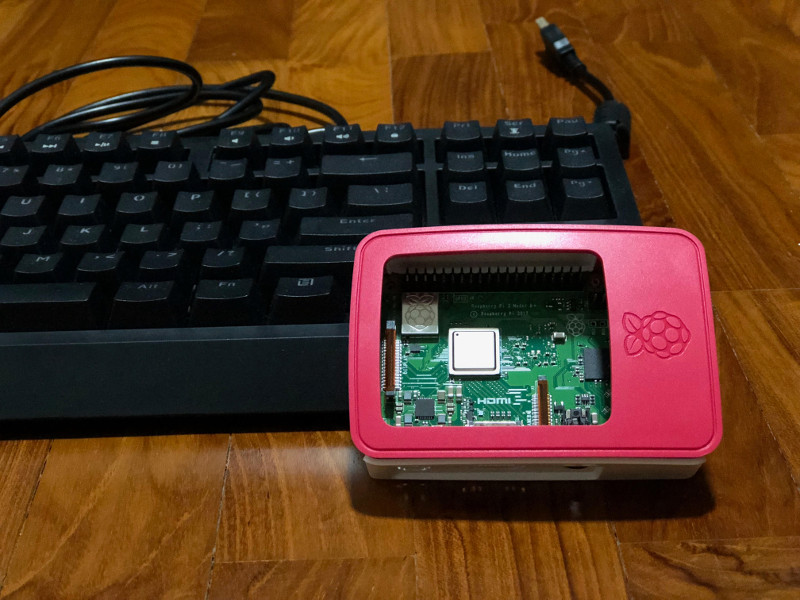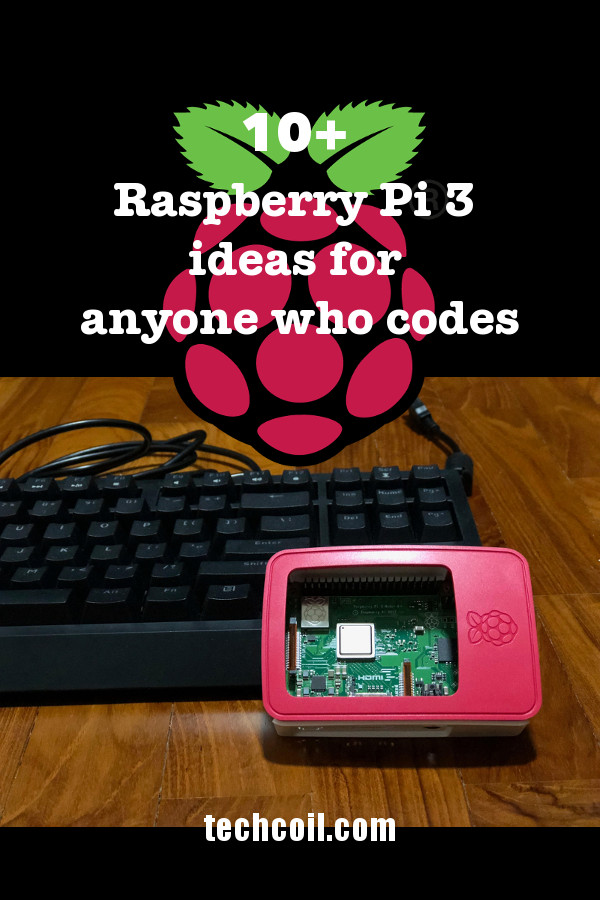Raspberry Pi 3 project ideas for programmers, software engineers, software developers or anyone who codes

The Internet of things is ubiquitous. At this time, there are many computing devices that are small and powerful enough to do our bidding.
Such devices include single board computers like the Raspberry Pi 3 that we can power on 24-7 without worrying about hefty electricity bills.
If you are reading this, you are probably someone who codes. And as someone who codes, we are always on the lookout for solutions that can help us be more productive.
Raspberry Pi 3 is one of the things that you should consider getting if you are a computer programmer. Perhaps you got a Raspberry Pi 3 kit as a gift. Or you have one lying somewhere collecting dust. In any case, here are some Raspberry Pi 3 project ideas for you.
Setup Raspbian Stretch on Raspberry Pi 3 for developing Python 3 applications
Given that Raspbian Stretch comes with a desktop environment, it is more convenient to develop your Python 3 applications for Raspberry Pi. Therefore, it is recommended that you setup Raspbian Stretch on a Raspberry Pi 3 for developing Python 3 applications if you are developing Python 3 applications for Raspberry Pi.
Getting your Raspberry Pi 3 to use Namecheap dynamic DNS to update your domain when your home’s public IP address changes
Undeniably, a domain name is important for professionals who work with web development to create a branding for themselves. When you are hosting web applications from home, you may want to consider getting your domain names from Namecheap. After you have your domain name, you can then get your Raspberry Pi 3 to use Namecheap dynamic DNS to update your domain when your home’s public IP address changes.
Setup a Raspberry Pi 3 reverse proxy server
A reverse proxy server can help us host multiple websites or web applications from home. Therefore, we should first setup a reverse proxy server on your Raspberry Pi 3. After that, we can deploy multiple web applications within our home network and access them from the Internet.
Host a static website on your Raspberry Pi 3 with Raspbian Stretch Lite and Nginx
Sometimes a static website is what you need to reach out to your target audience. For example, you can put up your own resume as a static website so that recruiters can access your capabilities with a web browser. In such a situation, you may want to host that static website on your Raspberry Pi 3 with Raspbian Stretch Lite and Nginx.
Setup a fast Git server on a Raspberry Pi 3
A Git server helps to keep codes that belong to different projects in order. Hence, we should setup a Git server to help us organise the codes that we write for different projects.
Whenever someone ask for a Git server recommendation on a Raspberry Pi 3, I tend to suggest Gogs. So setup your own Raspberry Pi 3 Git server with Go Git Service and Raspbian Stretch Lite.
However, if you do not have Raspberry Pi 3, setting up Gogs on Raspberry Zero W is fine too.
Setup a project management platform on your Raspberry Pi 3
Driving a car without having an idea of where you want to go can be a waste of energy. Similarly, trying to write codes without planning can be a waste of your time and energy. Unless you enjoy wasting time, you probably want to setup a project management platform on your Raspberry Pi 3.
For this purpose of planning the codes that you write, you can setup Taiga on your Raspberry Pi 3. Although it takes quite a while to setup Taiga, you should reap benefits in the long run.
Setup a Wiki site on your Raspberry Pi 3
In order to remember the key ideas of the projects that we are building, we need a place to document them. For this purpose, you can setup your own Wiki site on a Raspberry Pi 3 with Dokuwiki.
Setup a Web IDE on your Raspberry Pi 3
A Web IDE allows you to code from anywhere as long as you have a device that can connect to the Internet with a web browser. With this in mind, you can setup Codiad Web IDE on your Raspberry Pi 3. After that, whenever you are on that one hour bus ride to work, you can work on your online portfolio to showcase your coding skills.
Setup Jenkins on your Raspberry Pi 3
Jenkins can help offload programmers from performing repetitive tasks. For example, Jenkins can help you run unit tests to make sure new code does not break existing codes. In addition, it can also inform us when one of your production deployment breaks down. As a result, setting up Jenkins on your Raspberry Pi 3 can help you become more efficient in building and maintaining your software projects.
Setup WordPress on your Raspberry Pi 3
WordPress is a popular blogging framework for people to "pen" their thoughts. As I had noted in my post on why programmers should blog, there are several good reasons to blogging. But before you spend money on a DigitalOcean droplet, setup your WordPress blog on your Raspberry Pi 3 first.
After all, you will want to have enough content for your blog before you make it public. Once you are ready, you can then migrate your MariaDB database from your Raspberry Pi 3 to your Digital Ocean droplet.
If you develop WordPress themes or plugins, the WordPress instance on your Raspberry Pi 3 can serve as a good testing server.
Setup phpMyAdmin on your Raspberry Pi 3
Setup phpMyAdmin on your Raspberry Pi 3 if you deploy LEMP based applications that utilized MySQL as the database. As a result of the setup, you will get an intuitive web interface to administer your MySQL database instances.
Setup Jupyter Notebook on your Raspberry Pi 3
Setup Jupyter Notebook on Raspberry Pi 3 and you get a web-based application suitable for capturing the whole computation process: developing, documenting, executing code and receiving feedback from code executions.
Furthermore, if you happen to take a course like Andrew Ng's Deep Learning, you will get a wealth of Jupyter Notebook documents that you can reference for your future projects. With a running Jupyter Notebook, you can readily access these documents when you need to.
What to get for implementing these project ideas?
If you do not own any Raspberry Pi 3 yet, you can consider getting one of the following combinations to implement the ideas mentioned here:
- V-Kits Raspberry Pi 3 Model B+ Basic Starter Kit and Sandisk Ultra 32GB Micro SDHC UHS-I Card with Adapter - 98MB/s U1 A1
- CanaKit Raspberry Pi 3 B+ (B Plus) with Premium Clear Case and 2.5A Power Supply and Sandisk Ultra 32GB Micro SDHC UHS-I Card with Adapter - 98MB/s U1 A1
- NeeGo Raspberry Pi 3 B+ (B Plus) Basic Kit Pi and Sandisk Ultra 32GB Micro SDHC UHS-I Card with Adapter - 98MB/s U1 A1
If you do not like the hardware combination in the kits, you may want to take a look at our Raspberry Pi 3 buying guide to mix and match different Raspberry Pi 3 components for your project.

Follow us